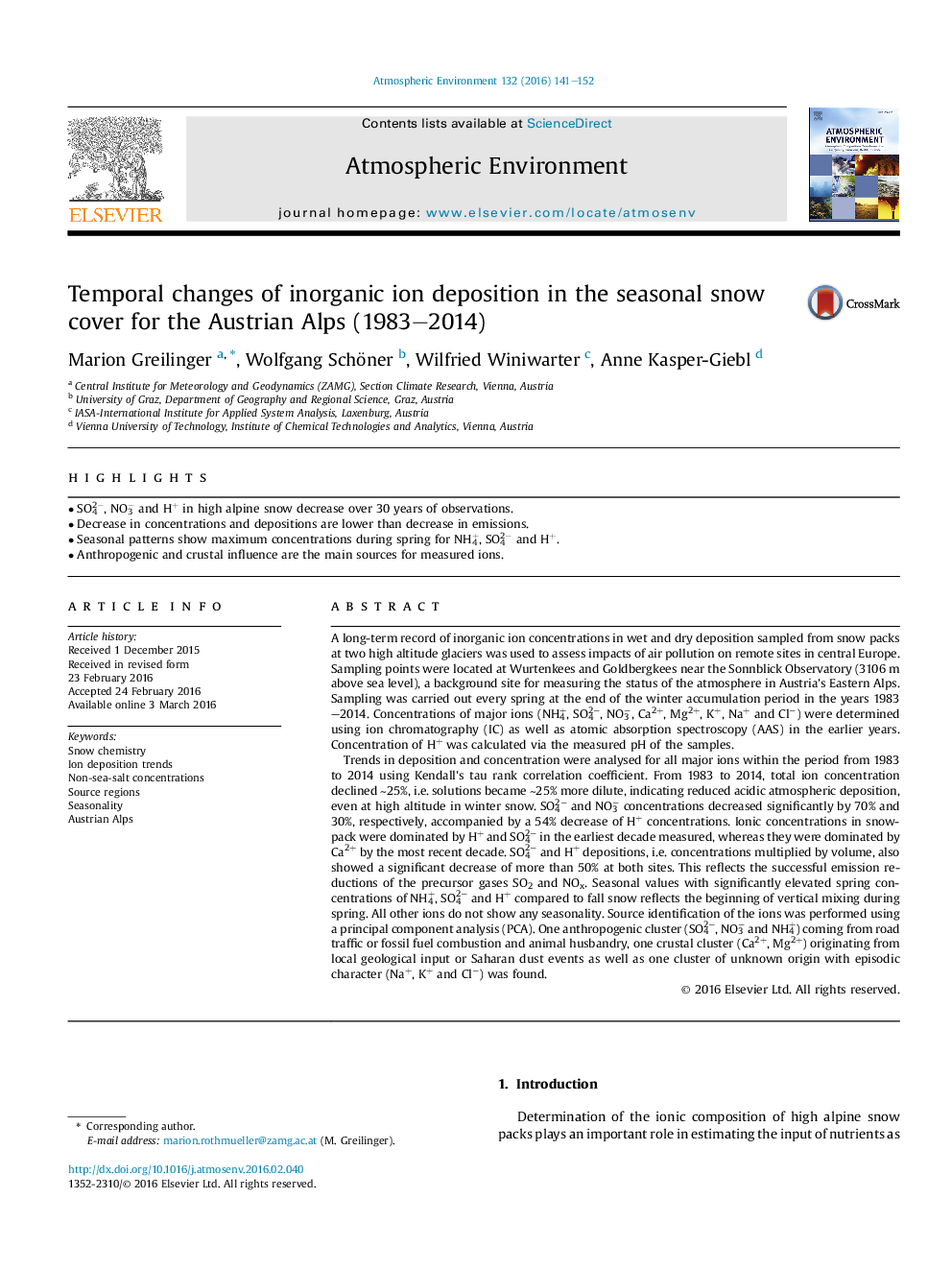| Article ID | Journal | Published Year | Pages | File Type |
|---|---|---|---|---|
| 6336369 | Atmospheric Environment | 2016 | 12 Pages |
Abstract
Trends in deposition and concentration were analysed for all major ions within the period from 1983 to 2014 using Kendall's tau rank correlation coefficient. From 1983 to 2014, total ion concentration declined â¼25%, i.e. solutions became â¼25% more dilute, indicating reduced acidic atmospheric deposition, even at high altitude in winter snow. SO42â and NO3â concentrations decreased significantly by 70% and 30%, respectively, accompanied by a 54% decrease of H+ concentrations. Ionic concentrations in snowpack were dominated by H+ and SO42â in the earliest decade measured, whereas they were dominated by Ca2+ by the most recent decade. SO42â and H+ depositions, i.e. concentrations multiplied by volume, also showed a significant decrease of more than 50% at both sites. This reflects the successful emission reductions of the precursor gases SO2 and NOx. Seasonal values with significantly elevated spring concentrations of NH4+, SO42â and H+ compared to fall snow reflects the beginning of vertical mixing during spring. All other ions do not show any seasonality. Source identification of the ions was performed using a principal component analysis (PCA). One anthropogenic cluster (SO42â, NO3â and NH4+) coming from road traffic or fossil fuel combustion and animal husbandry, one crustal cluster (Ca2+, Mg2+) originating from local geological input or Saharan dust events as well as one cluster of unknown origin with episodic character (Na+, K+ and Clâ) was found.
Related Topics
Physical Sciences and Engineering
Earth and Planetary Sciences
Atmospheric Science
Authors
Marion Greilinger, Wolfgang Schöner, Wilfried Winiwarter, Anne Kasper-Giebl,
